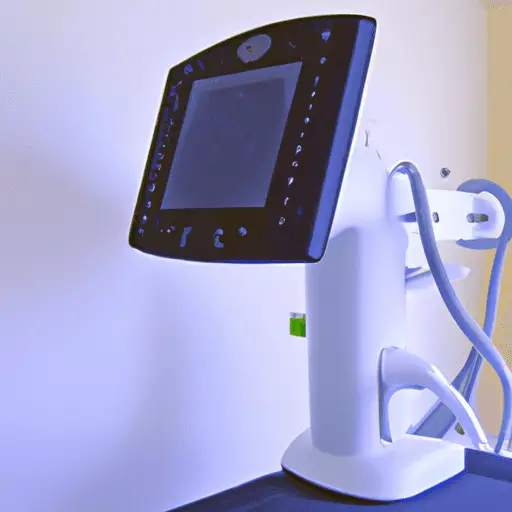-
Table of Contents
- Understanding Photodynamic Therapy (PDT): A Comprehensive Overview
- Key Takeaways
- Introduction: Shedding Light on Photodynamic Therapy
- The Mechanism of Photodynamic Therapy
- Applications of Photodynamic Therapy
- Benefits and Limitations of Photodynamic Therapy
- Future of Photodynamic Therapy
- FAQ Section
- What is Photodynamic Therapy?
- What is PDT used for?
- How does PDT work?
- What are the benefits of PDT?
- What are the limitations of PDT?
- Conclusion: Illuminating the Potential of PDT
- Further Analysis
- Key Takeaways Revisited
Understanding Photodynamic Therapy (PDT): A Comprehensive Overview

[youtubomatic_search]
Key Takeaways
- Photodynamic Therapy (PDT) is a non-invasive treatment method that uses light and a photosensitizing chemical substance to destroy abnormal cells.
- PDT is primarily used to treat certain types of cancer and pre-cancerous conditions, but it also has applications in dermatology and ophthalmology.
- The treatment involves three key components: a photosensitizer, light, and oxygen.
- While PDT has several advantages, including minimal side effects and the ability to target specific areas, it also has limitations such as the inability to treat large or deep tumors.
- Research is ongoing to improve PDT techniques and expand its applications.
Introduction: Shedding Light on Photodynamic Therapy
Photodynamic Therapy (PDT) is a unique treatment method that combines light and a special drug, known as a photosensitizer, to kill abnormal cells. It is primarily used to treat certain types of cancer and pre-cancerous conditions, but its applications extend to other medical fields as well. This article provides a comprehensive overview of PDT, its mechanisms, applications, benefits, and limitations.
The Mechanism of Photodynamic Therapy
The process of PDT involves three key components: a photosensitizer, light, and oxygen. The photosensitizer is a drug that patients ingest, inject, or apply topically. Once absorbed by the cells, it is activated by a specific wavelength of light. This activation triggers a chemical reaction that produces a form of oxygen that kills the cells. The beauty of PDT is that it can target specific areas, minimizing damage to healthy cells.
Applications of Photodynamic Therapy
PDT is primarily used to treat certain types of cancer, including skin, lung, and esophageal cancers. It is also effective in treating pre-cancerous conditions such as actinic keratosis. Beyond oncology, PDT has applications in dermatology for conditions like acne and rosacea, and in ophthalmology for age-related macular degeneration. Research is ongoing to expand the use of PDT to other medical fields.
Benefits and Limitations of Photodynamic Therapy
One of the main advantages of PDT is its non-invasive nature. It also has minimal side effects compared to traditional cancer treatments like chemotherapy and radiation. However, PDT is not without limitations. It cannot treat large or deep tumors because the light cannot penetrate far. Furthermore, patients must avoid sunlight and bright indoor light for a period after treatment to prevent skin damage.
Future of Photodynamic Therapy
Research is ongoing to improve PDT techniques and expand its applications. Scientists are exploring new photosensitizers, light sources, and treatment protocols. There is also interest in combining PDT with other treatments to enhance its effectiveness. The future of PDT looks promising, with potential to revolutionize the treatment of various medical conditions.
FAQ Section
What is Photodynamic Therapy?
Photodynamic Therapy (PDT) is a treatment method that uses light and a photosensitizing chemical substance to destroy abnormal cells.
What is PDT used for?
PDT is primarily used to treat certain types of cancer and pre-cancerous conditions. It also has applications in dermatology and ophthalmology.
How does PDT work?
PDT involves a photosensitizer that is absorbed by cells and activated by light. This activation triggers a chemical reaction that produces a form of oxygen that kills the cells.
What are the benefits of PDT?
PDT is non-invasive and has minimal side effects compared to traditional cancer treatments. It can also target specific areas, minimizing damage to healthy cells.
What are the limitations of PDT?
PDT cannot treat large or deep tumors because the light cannot penetrate far. Patients must also avoid sunlight and bright indoor light for a period after treatment.
Conclusion: Illuminating the Potential of PDT
Photodynamic Therapy (PDT) is a unique and promising treatment method that combines light and a photosensitizer to kill abnormal cells. While primarily used in oncology, its applications extend to other medical fields, offering a non-invasive and targeted approach to treatment. Despite its limitations, ongoing research and advancements hold the potential to further enhance PDT’s effectiveness and expand its applications, illuminating a bright future for this innovative therapy.
[youtubomatic_search]
Further Analysis
As we delve deeper into the world of Photodynamic Therapy, it is clear that this treatment method holds significant potential. Its ability to target specific areas and minimize damage to healthy cells sets it apart from traditional cancer treatments. However, the limitations of PDT, such as its inability to treat large or deep tumors, highlight the need for ongoing research and development. As scientists continue to explore new photosensitizers, light sources, and treatment protocols, the future of PDT looks promising.
Key Takeaways Revisited
- Photodynamic Therapy (PDT) is a non-invasive treatment method that uses light and a photosensitizing chemical substance to destroy abnormal cells.
- PDT is primarily used to treat certain types of cancer and pre-cancerous conditions, but it also has applications in dermatology and ophthalmology.
- The treatment involves three key components: a photosensitizer, light, and oxygen.
- While PDT has several advantages, including minimal side effects and the ability to target specific areas, it also has limitations such as the inability to treat large or deep tumors.
- Research is ongoing to improve PDT techniques and expand its applications.

Leave a Reply